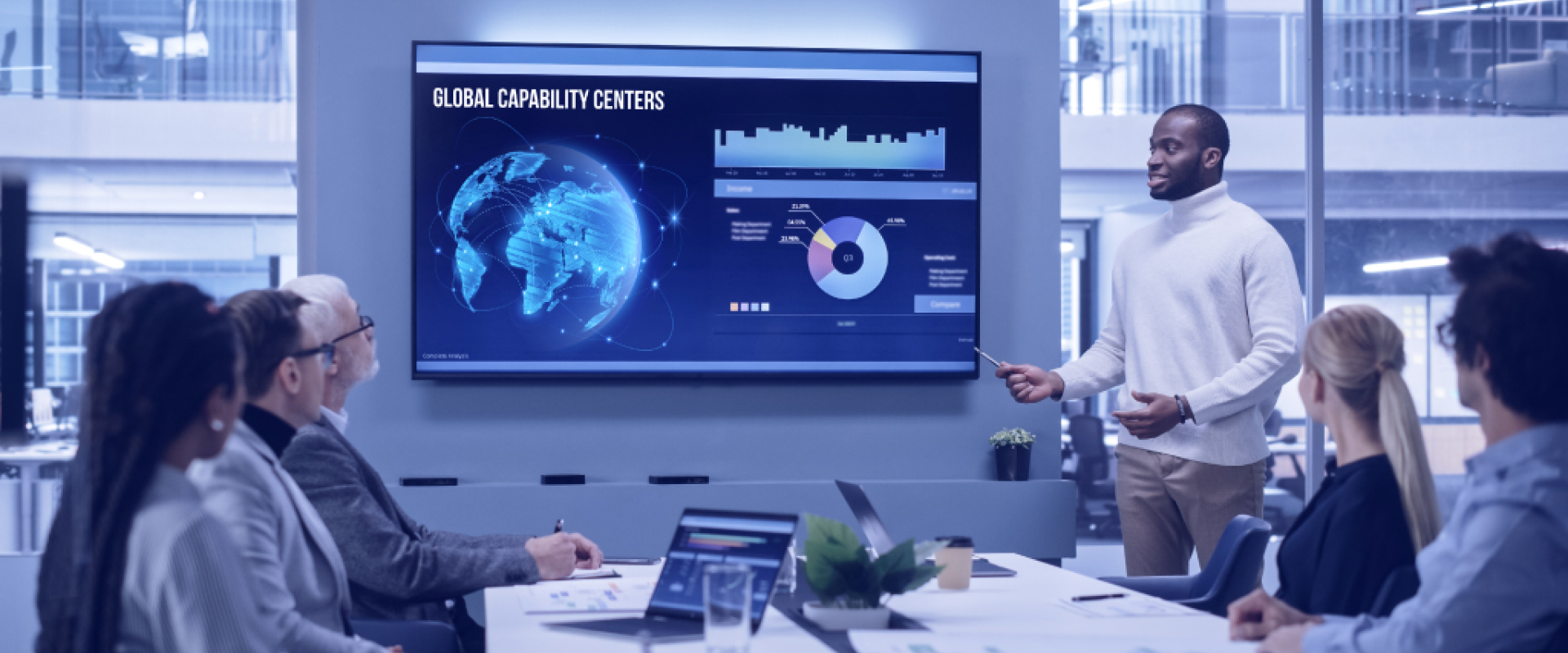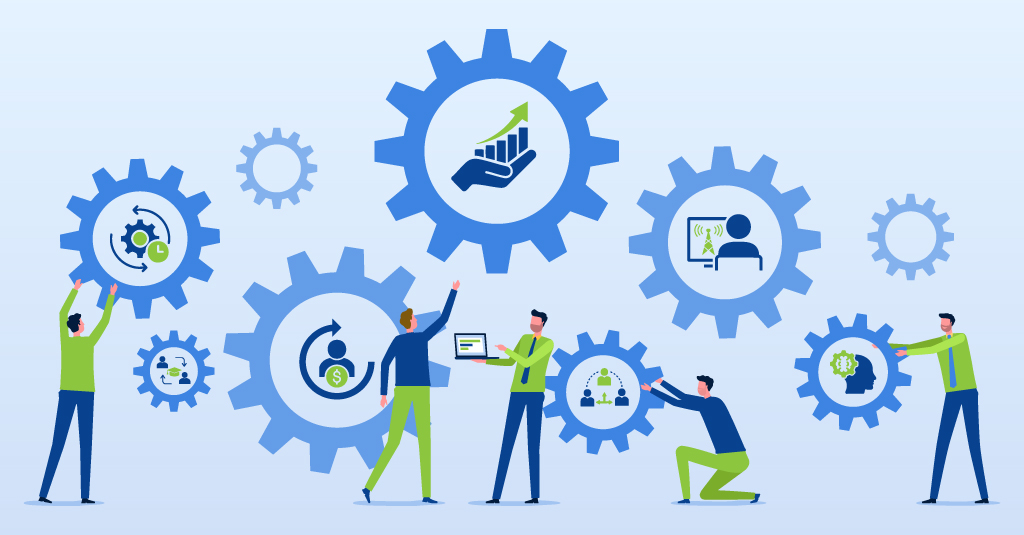Particularly at Global Capability Centers (GCCs), where the workforce is varied in terms of job function, skill level, and background, training a diverse workforce is no simple undertaking. In actuality, a standard eLearning course typically fails, even if it can seem like the obvious choice. The general level of involvement lags, some people find it too easy, and others fall behind.
New recruits need core knowledge, whereas seasoned workers require advanced, job-specific learning. One-size-fits-all doesn’t work.
Here’s when adaptive learning is useful. Adaptive learning uses AI, real-time data, and personalized content routes to personalize training for individual learners, helping GCCs deliver more potent, effective, and relevant training. Let’s find out why GCCs require a brighter learning method, how adaptive learning functions, and the indisputable advantages of adapting training to the learner, and not vice versa.
I. Why GCCs Need a Smarter Learning Approach
Before we dive into adaptive learning, let’s set the stage. GCCs are a hotbed of talent, but their workforce is:
Geographically and culturally diverse: Employees have different backgrounds, different languages, different traditions, and different learning styles.
Multi-generational and multi-skilled: Your new college recruits will not be taught the same way as the 20-year veteran senior executives.
Doing business in heavily regulated industries: Banking, health care, and IT each are highly compliant-regulated areas and require both efficient training as well as locally customized training.
So, what happens when you implement a one-size-fits-all eLearning program? You lose engagement. You waste time. You end up with knowledge gaps.
Take compliance training, for example. You’ve got a seasoned finance team in India and a newly onboarded support team in Poland. If you give both teams the same compliance module, the experienced team is bored, and the new team is overwhelmed. That’s where adaptive learning shines.

II. What is Adaptive Learning (And Why Should You Care)?
Here’s how it works:

Learner Assessment
Employees watch a pre-test or learn content so that the system may gauge their state of knowledge.
Personalized Content Paths
According to the review, employees receive personalized learning pathways—conquering what they need to learn without having to go through what they already know.
Dynamic Adjustments in Real-Time
AI always tracks performance and adjusts content dynamically, delivering more resources where needed.
Feedback & Reinforcement
To encourage learning, staff members get targeted feedback and reinforcement activities.
Types of Adaptive Learning Approaches
- Rule-based Adaptation: Training adjusts based on predefined rules (e.g., “If the learner scores below 70%, assign extra reading”).
- AI-powered Personalization: Uses machine learning to track behavior, recommend content, and predict learning gaps.
- Competency-based Learning: Moves employees forward based on mastery rather than seat time.


III. The Business Case: How Adaptive Learning Benefits GCCs
Now, let’s get to the part that your CFO and CHRO will love—the ROI.
Personalized Learning Journeys = Higher Engagement
When employees feel that training is applicable to them, they are more involved. Adaptive learning does away with “Why am I sitting through this?” frustration by delivering the appropriate content at the appropriate moment.
Example: A sales team in the Philippines may need more customer negotiation training, while a team in Mexico may need product knowledge reinforcement. An adaptive platform identifies these needs automatically.
Faster and More Efficient Training
Stat to Know: Research by McKinsey found that companies using AI-driven learning strategies saw a 30-50% reduction in training time while maintaining or improving knowledge retention.
Better Compliance and Risk Management
For heavily regulated industries, adaptive learning ensures employees actually understand compliance topics, rather than just clicking through slides to complete a course.
Example: A GCC in the financial sector uses adaptive compliance training to identify employees struggling with data security concepts and provides targeted reinforcement activities.
Measurable Impact & Data-Driven Insights
L&D leaders get detailed analytics on learner performance, helping them refine training programs and demonstrate ROI to leadership.
Example: Instead of generic completion rates, adaptive learning provides insights like “75% of employees struggled with GDPR compliance in Europe, requiring additional resources.”

IV. Implementing Adaptive Learning in Your GCC

Step 1: Choose the Right Technology
Look for an AI-powered LMS that supports:
- Personalized learning paths
- Real-time analytics
- AI-driven content recommendations
Step 2: Develop Personalized Content
Step away from the generic modules and develop:
- Role-specific training: Various learning streams for finance, HR, IT, etc.
- Skill-based pathways: Emphasis on building skills over mere completion.
Step 3: Leverage Data for Continuous Improvement
- Monitor learner engagement and knowledge gaps.
- Use insights to refine content and assessments.

V. Emerging Trends in Adaptive Learning
The future of adaptive learning includes:
AI-powered coaching
Real-time feedback from performance data.
Predictive analytics
Identifying training needs before gaps appear.
Gamification & VR
Increasing interactivity and immersion while learning.
Microlearning
Providing bite-sized learning for quicker
knowledge acquisition.
Scenario-based learning
Putting the learners in real, decision-dependent settings to enhance knowledge application.

VI. How Upside Learning Can Help
Let’s get real: Employees don’t have time to waste on training that is irrelevant to them. GCCs require solutions that value employees’ time, solve their own unique needs, and provide measurable impact.
At Upside Learning, we excel at providing science-driven adaptive learning solutions tailored to address the distinctive needs of GCCs. We apply cognitive science principles such as spaced repetition, retrieval practice, and contextual learning in real-world settings to facilitate knowledge retention and skill application. Our adaptive learning solutions dynamically adapt to meet the unique learning needs of individuals, providing the right content at the right moment—compliance training, leadership training, or technical skills training. Through scenario-based learning, we provide learners with the opportunity to make informed decisions in real-world contexts, practicing critical thinking and problem-solving. At the same time, our microlearning process allows employees to learn key concepts at a rapid pace without interrupting their work process. If you are searching for high-impact, data-led training solutions purpose-built for GCCs, let’s discuss and see how we can propel learning outcomes together.











